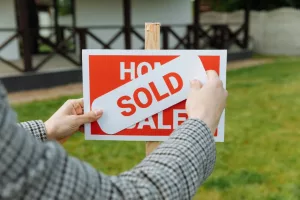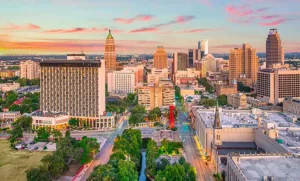2025 guide to Local Law 11 in NYC
February 14, 2025 by Georges Benoliel
Go Back To Previous Page
New York City is chock-full of high-rise buildings lining the streets as far as the eye can see. If you’re a property owner in NYC or looking to buy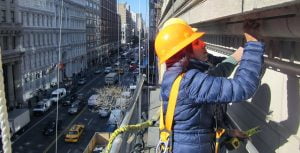 property, you might have heard of Local Law 11 or the FISP program during your research. But what exactly is FISP or Local Law 11? We’ve compiled everything you need about FISP/Local Law 11. We will review the frequency of local law 11 and engineering in NYC.
property, you might have heard of Local Law 11 or the FISP program during your research. But what exactly is FISP or Local Law 11? We’ve compiled everything you need about FISP/Local Law 11. We will review the frequency of local law 11 and engineering in NYC.
The NYC Facade Inspection Safety Program (FISP) was a.k.a Local Law 11. It requires NYC buildings taller than six stories to get their facades inspected and repaired every five years. FISP/Local Law 11 can affect you as a property owner and a potential home buyer.
So, what should you include in a FISP assessment, and what does that mean for you? You’ll find the answers to all that and more as you read this article. So, prepare to learn everything you need to know about FISP/Local Law 11.
What is the Façade Inspection Safety Program (FISP)?
FISP, formerly known as Local Law 11, requires buildings taller than six stories to inspect exterior walls and appurtenances every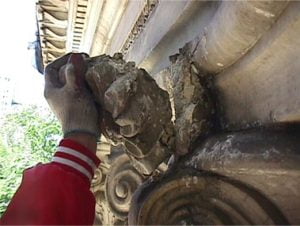 five years. Upon inspection completion, a building must file a technical report with the Department of Buildings classifying façade elements as either.
five years. Upon inspection completion, a building must file a technical report with the Department of Buildings classifying façade elements as either.
- Safe,
- or Safe with a repair and maintenance program
- or Unsafe.
Owners of Unsafe façade elements must address the issue immediately and repair it within 30 days. FISP ensures pedestrian safety by preventing bricks, concrete, and other façade elements from falling on pedestrians.
Fourteen thousand buildings in NYC are subject to the FISP inspection protocol. The FISP inspection, reporting, and action requirements are in RCNY (Rules of the City of New York) 103-04, Periodic Inspection of Exterior Walls and Appurtenances Buildings.
What is Local Law 11 in NYC?
Local Law 11 is the former name of what has become known as FISP (the Facade Inspection Safety Program). As the name implies, FISP involves inspecting the facades of buildings within NYC. As of 2021, over 14,000 buildings within New York City must have their facades reviewed to ensure that they comply with FISP. Local Law 11 was an update to Local Law 10, the original measure passed by the Mayor’s office to address pedestrian safety.
Local Law 11 was passed by Mayor Giuliani in 1998 as an update to Local Law 10.
Local Law 11 set much stricter inspection requirements. Several public safety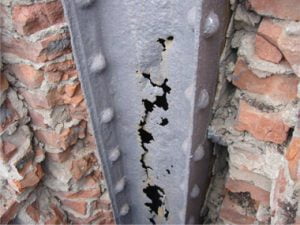 events led to the passage of Local Law 11. In 1997, a partial building collapse on Madison Avenue occurred. Previously, only the front façade and side walls up to 25 feet from the street required an inspection.
events led to the passage of Local Law 11. In 1997, a partial building collapse on Madison Avenue occurred. Previously, only the front façade and side walls up to 25 feet from the street required an inspection.
Local Law 11 mandated the inspection of all four sides of a building; the only exception was 12″ or fewer walls from a neighboring building. It also mandated a physical inspection from scaffolding instead of a visual ‘binocular’ inspection from afar.
Local Law 11 also amended the report classifications from “pass” or “fail” to “safe,” “unsafe,” or “safe with a repair and maintenance program.” Authorities designed this law to ensure that buildings that required a repair and maintenance program would be addressed promptly.
An inspection occurs once every five years.
A New York State Registered Architect (RA) or NYS Licensed Professional Engineer (PE) conducts the inspection. The inspector is a QEWI (Qualified Exterior Wall Inspector). If the inspector discovers unsafe conditions, he must notify the building owner and the Department of Buildings. Once the inspection is complete, the architect must file a critical examination report with the City’s Department of Buildings.
The architect must document the report’s exterior walls and appurtenances as safe, unsafe, or Safe with a repair and maintenance program. Buildings are required to report all dangerous conditions immediately and repair them within 30 days.
So, what is a facade?
Regarding FISP, a facade refers to a building’s face (exterior walls, windows, etc). Remember that a building’s face does not necessarily mean the front of the building. Instead, it is any face of the building along the sidewalk or street below where people pass.
FISP is the NYC regulation that requires the faces of buildings taller than six stories to be inspected once every five years. The goal is to ensure that no bricks or pieces of the building’s face are in danger of falling off.
It was put in place for obvious reasons. If brick or concrete falls from a six-story building onto a pedestrian on the sidewalk below, there can be severe injury or even death.
Following an FISP inspection, the building owner must submit an FISP compliance report to the city, showing the inspector’s building classification. The report can classify the property as safe, with a repair and maintenance program, or unsafe. Let’s take a deeper look at how NYC determines these classifications and what they mean:
- Safe— no problems with the building; everything is in good condition.
- Safe with a repair and maintenance program— requires repairs as noted within one to five years to prevent being classified as unsafe during the next FISP cycle. A preventive maintenance schedule is critical.
- Unsafe— problems or defects that threaten public safety. Buildings classified as dangerous under industry standards require immediate repair and public protection, such as a sidewalk shed.
If the report determines the facade is safe, the building does not require any facade work during the cycle. Facades designated as SWARMP have the potential to become unsafe. However, the owner must not take immediate action. The QEWI must offer a specific month and year to rectify the condition in the technical report.
What are appurtenances?
The law defines appurtenances as “exterior fixtures, flagpoles, signs, parapets, copings, guard rails, window frames, balcony enclosures, window guards, window air conditioners, flower boxes, and any equipment attached to or protruding from the facade” (RCNY §103-04).
FISP Cycle 8 also mandates the inspection of balcony railings.
What is Local Law 10?
Mayor Ed Koch passed Local Law 10 in 1980. He designed the first city ordinance to prevent the safety risks posed by the deterioration of building facades. Authorities passed the ordinance after a falling piece of masonry killed a Barnard College freshman on the Upper West Side.
Local Law 10 was replaced and broadened by Local Law 11 in 1998 and FISP in recent years to enhance the safety of the façade repair program.
Does FISP Affect Homebuyers in NYC?
If you’re looking to buy a home in NYC, you should get with your agent and have them determine the status of the building’s most recent FISP compliance. Your agent should find the building’s most recent report and determine when the next inspection is due.
As a potential homeowner within the overall development, you are not responsible for the building’s compliance with FISP. Still, it’s essential to know if the building owner keeps up to date with the code.
FISP inspections can be expensive and can take a lot of time
If there’s one coming up soon, the landlord may want to raise the rent to offset the additional cost. FISP inspections can also lead to other issues that were previously unknown. During a FISP inspection, the inspector does not limit his work to ensuring the building complies with FISP, and they can also note any other deficiencies.
If the condo, co-op, or condo you are buying into does not have sufficient reserves to pay for repairs, you may need to seek a loan, refinance, or levy an assessment on unit owners.
If the building you’re considering buying a unit in is “unsafe,” you may want to consider finding a different place to live. This could indicate that the owner does not put enough money into capital improvements, suggesting that you might find other issues.
 five years. Upon inspection completion, a building must file a technical report with the Department of Buildings classifying façade elements as either.
five years. Upon inspection completion, a building must file a technical report with the Department of Buildings classifying façade elements as either. property
property events led to the passage of Local Law 11. In 1997, a partial building collapse on Madison Avenue occurred. Previously, only the front façade and side walls up to 25 feet from the street required an inspection.
events led to the passage of Local Law 11. In 1997, a partial building collapse on Madison Avenue occurred. Previously, only the front façade and side walls up to 25 feet from the street required an inspection.